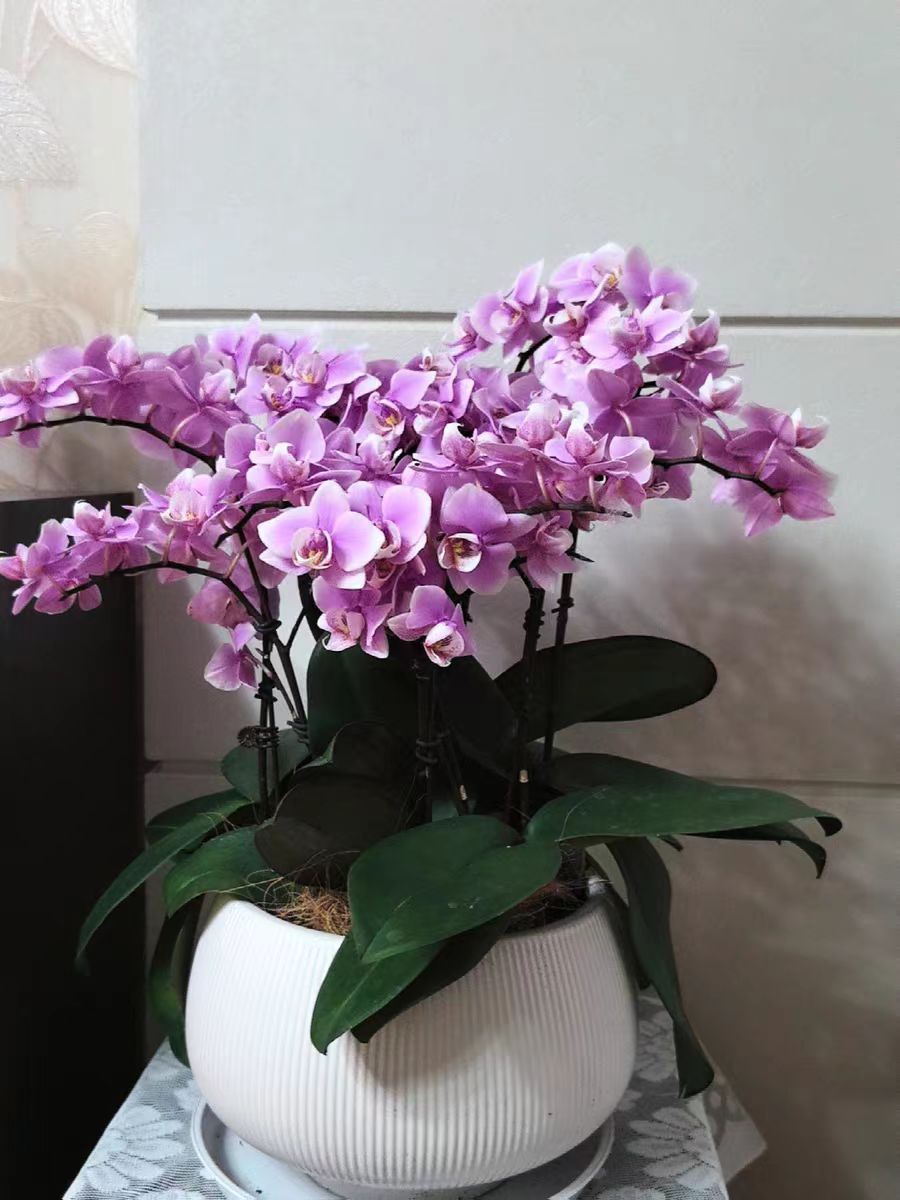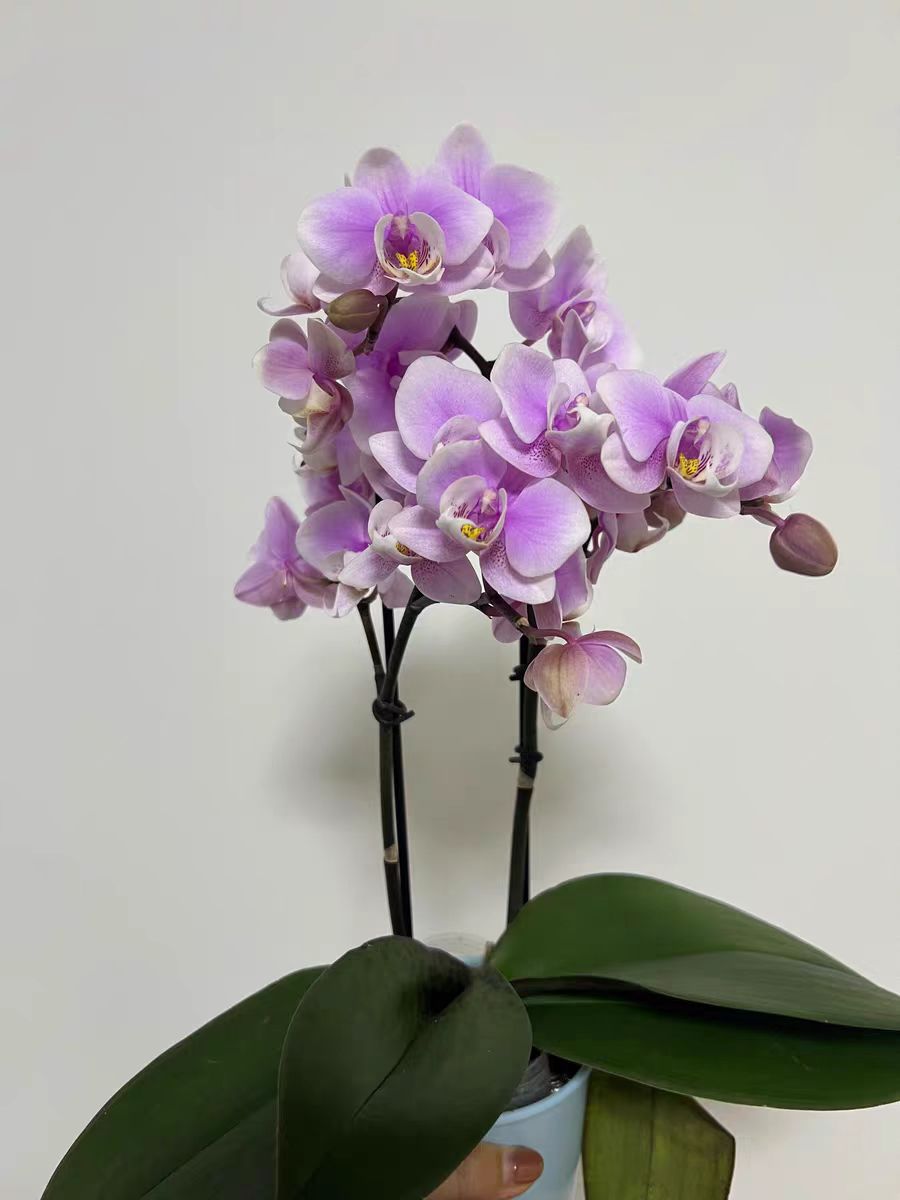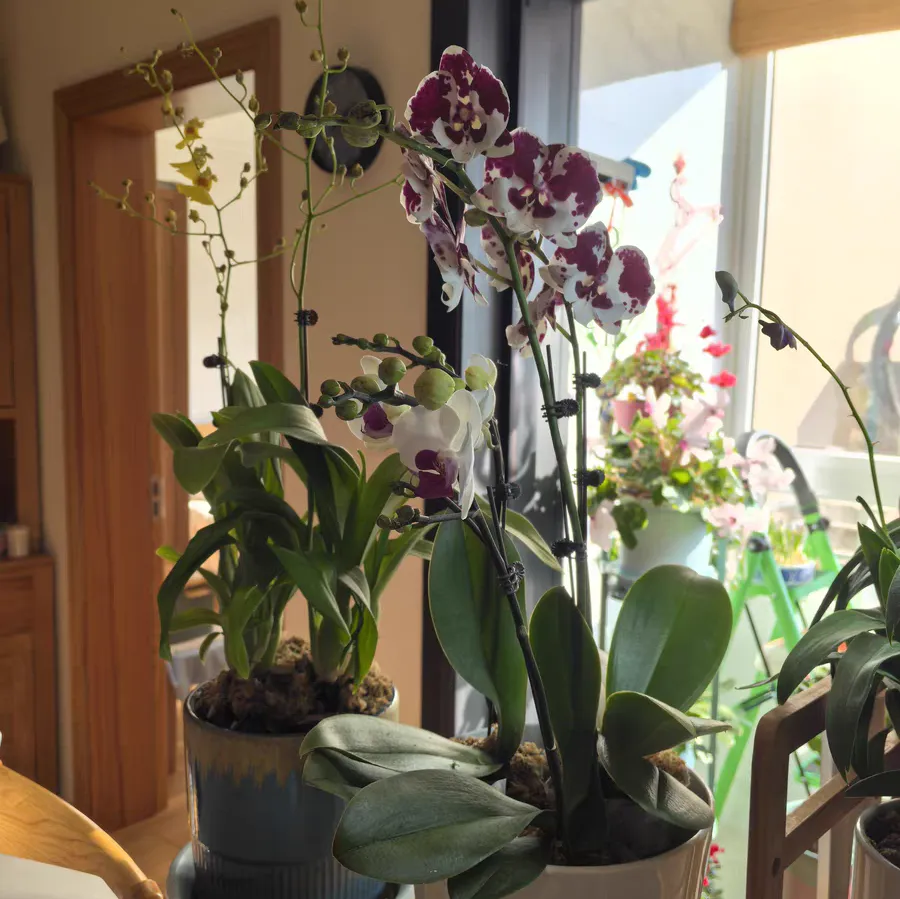In the process of caring for Phalaenopsis orchids, many orchid enthusiasts may consider planting multiple Phalaenopsis orchids together in order to create a more lush and colorful ornamental effect. However, is this practice really advisable?
Theoretically speaking, Phalaenopsis orchids can be planted together in groups. In actual operation, some merchants or orchid enthusiasts will combine different varieties of Phalaenopsis orchids to form colorful potted plants to enhance their ornamental value. However, this practice should be treated with caution, because planting multiple Phalaenopsis orchids together is not without risks.
Disadvantages of planting multiple Phalaenopsis orchids together
Differences in growth environment: Different varieties of Phalaenopsis orchids have different growth habits and ecological requirements. Planting them together in the same pot may lead to the restricted growth of some Phalaenopsis orchids due to differences in light, humidity, temperature and other aspects. Such differences in the growth environment often make it impossible for some plants to obtain suitable growth conditions, thus affecting their overall health.
Increased management difficulty: After planting multiple Phalaenopsis orchids together, the management difficulty increases significantly. Different varieties of Phalaenopsis orchids may require different watering frequencies, fertilization methods and pruning techniques. Improper management can easily lead to overwatering or drought of some plants, and even cause the spread of diseases and pests. Such complex management requirements are undoubtedly a huge challenge for inexperienced orchid enthusiasts.
Root competition and space limitation: The roots of Phalaenopsis orchids are relatively weak and not as developed as those of other orchids. When multiple Phalaenopsis orchids are planted together, the roots will compete with each other for nutrients and water, resulting in poor growth of some plants. In addition, as the plants grow, the roots will gradually expand. If the space in the potted plant is limited, it is very likely to cause problems such as root congestion and rot. Therefore, when choosing a potted plant, the growth space of the plants and the needs of their roots should be fully considered.
Increased risk of diseases and pests: Once diseases and pests occur after planting multiple Phalaenopsis orchids together, they can easily spread to other plants quickly. This risk is particularly prominent in combined potted plants, because different varieties of Phalaenopsis orchids may have different disease and pest resistance capabilities. Once diseases and pests break out, it is very difficult to effectively control them, which will often cause a devastating blow to the entire potted plant.
Limited ornamental effect: Although planting multiple Phalaenopsis orchids together may look more lush and colorful in the initial stage, this ornamental effect may gradually weaken over time. Different varieties of Phalaenopsis orchids vary in growth rate and flowering period, which may lead to a gap period for some plants after the end of the viewing period, affecting the overall ornamental effect.
Although Phalaenopsis orchids can be planted together in groups in theory, they need to be treated with caution in actual operation. The disadvantages brought by planting multiple Phalaenopsis orchids together cannot be ignored, including differences in growth environment, increased management difficulty, root competition and space limitation, increased risk of diseases and pests, and limited ornamental effect. Therefore, for inexperienced orchid enthusiasts, it is recommended to choose potted Phalaenopsis orchids of a single variety for cultivation to ensure their healthy growth and good ornamental effect.
Can Phalaenopsis orchids be planted together in groups?

Share with
Tagged in :




Leave a Reply